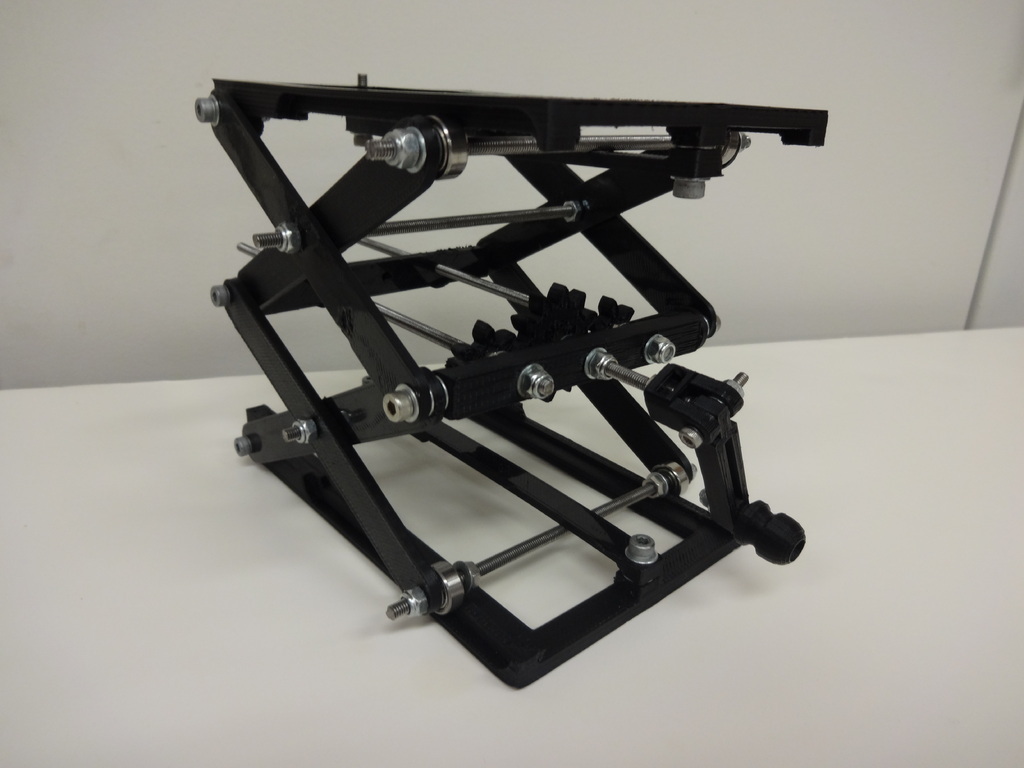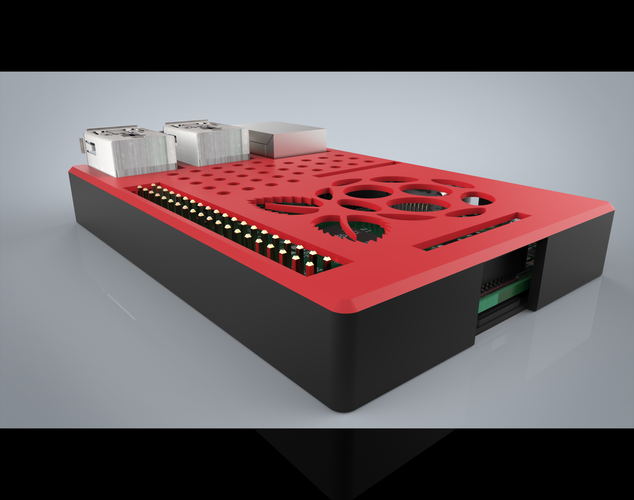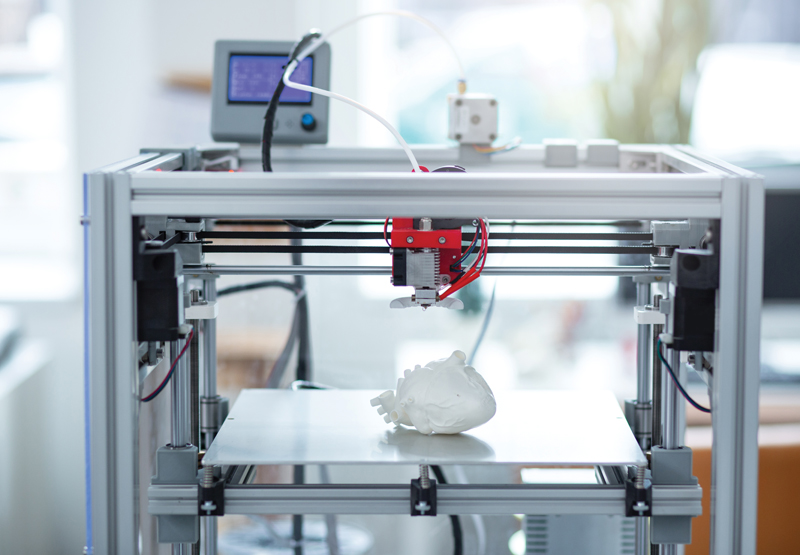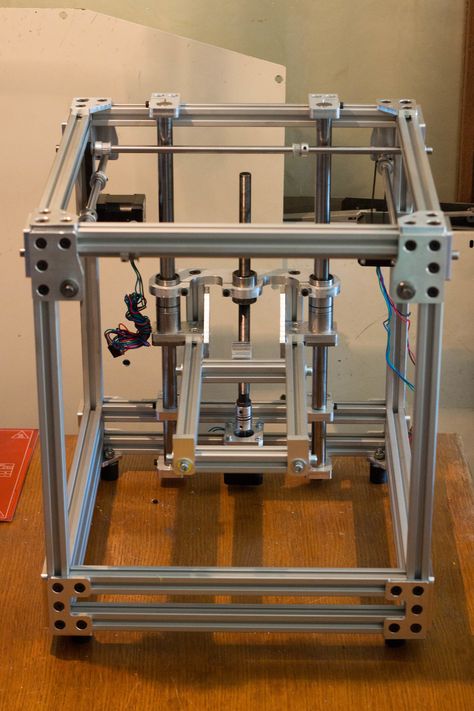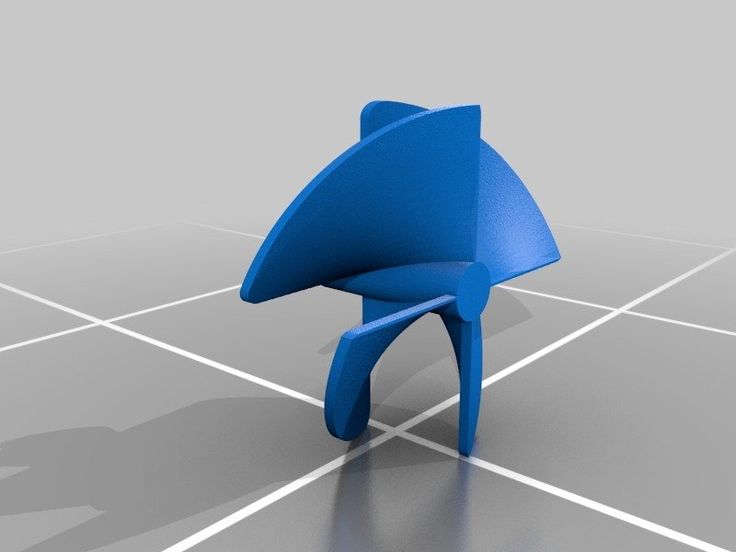3D printer lab equipment
Five innovative ways to use 3D printing in the laboratory
Valentine Ananikov, a chemist at the Zelinsky Institute of Organic Chemistry in Moscow, runs chemical reactions so delicate that just a trace of metal nanoparticles, smaller than a bacterium, could change his results. So when his laboratory finishes an experiment, rigorous cleaning is required. Or at least, it used to be. In 2016, Ananikov began creating disposable reaction vessels instead. To do that, he relies on a technology that has captured the imagination of do-it-yourself hackers, engineers and scientists alike: 3D printing.
In 3D printing, also known as additive manufacturing, a 3D computer model is transformed into a physical object layer by layer, like icing a cake. Ananikov’s team uses the technology to create bespoke chemical reactors in days, rather than waiting weeks or more for them to be made and shipped by an outside vendor. More importantly, the cost of 3D printing plastic is so low that the group can afford to treat the equipment as consumables to be used once and then thrown away, with no clean-up required. “For research labs dealing with interdisciplinary projects,” Ananikov says, “3D printing is a kind of standard tool nowadays.”
3D printers have been widely adopted by members of the ‘maker culture’ for education and creating innovative objects. But they are increasingly becoming standard equipment in scientific laboratories, as well. Researchers can use them to replace broken instrument parts, build custom sample holders and model everything from biological molecules to oil-bearing rocks. And clinicians can use them to create implants and teaching models.
Objects can be 3D printed using several technologies, but one of the most widespread is fused-filament fabrication (FFF), also called fused-deposition modelling. In FFF printers, a narrow, coloured filament — typically plastic wire — is heated and extruded, forming a shape a layer at a time. By contrast, older stereolithography printers use a tank of liquid light-activated resin that is hardened into precise shapes with a laser.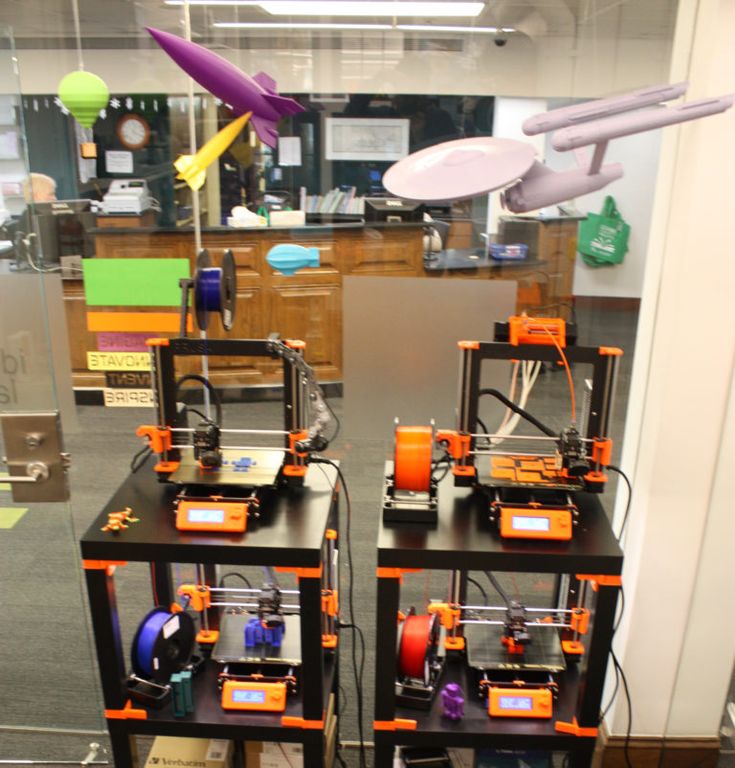 FFF printers tend to produce less detailed objects than stereolithography printers, but are easier and cheaper to use.
FFF printers tend to produce less detailed objects than stereolithography printers, but are easier and cheaper to use.
Commercial FFF printers can be acquired for anything from hundreds to thousands of dollars. Or researchers can build the hardware themselves with kits or designs from the open-source RepRap project for just a few hundred dollars.
3D printing isn’t new: stereolithography printers have existed since the 1980s. But falling prices have made the technology widely available. Below are four ways in which researchers have taken advantage of 3D printing.
Equipment on the go
Julian Stirling, a physicist at the University of Bath, UK, is part of a team that designed light microscopes that can be made with 3D-printed plastic components. The idea is to build them in the field in Tanzania and use them to diagnose malaria by searching for parasites in blood. Tanzania has a shortage of knowledgeable mechanics and local components for repairing scientific equipment, he says, and importing components can be expensive and time-consuming.![]() By 3D printing parts, local doctors and scientists can repair their microscopes more quickly and cheaply. A local firm in Tanzania has even created FFF printers from electronic waste and other local materials, he adds.
By 3D printing parts, local doctors and scientists can repair their microscopes more quickly and cheaply. A local firm in Tanzania has even created FFF printers from electronic waste and other local materials, he adds.
Several websites, including Thingiverse and MyMiniFactory, provide forums for scientists to share computer models of printable components. But in Stirling’s experience, models on these sites are often incomplete, lacking either documentation for a particular project or key files for modifying the designs. As a result, his team creates its builds from scratch, using an open-source programming language called OpenSCAD. Their microscopes can be entirely 3D printed except for the camera, motors and lenses.
When it comes to 3D printing, it’s easy to make mistakes, Stirling says. But because the technology is fast and inexpensive, it’s simple to iterate on designs. “This experience can only be built up by trial and error,” he notes.
Practice has taught Stirling that there’s a big difference between using a 3D printer in the laboratory and doing so in the field. 3D printing plastic filament in Tanzania’s humid climate is typically harder than in a climate-controlled laboratory because the humidity affects the plastic filament, leading to more failed prints. Furthermore, power cuts are not uncommon, and only some printers can resume printing a half-finished object after power is restored. There’s not much that Stirling and his team can do about the climate, but they do use uninterruptable power supplies to ensure their print jobs run to completion, he says.
3D printing plastic filament in Tanzania’s humid climate is typically harder than in a climate-controlled laboratory because the humidity affects the plastic filament, leading to more failed prints. Furthermore, power cuts are not uncommon, and only some printers can resume printing a half-finished object after power is restored. There’s not much that Stirling and his team can do about the climate, but they do use uninterruptable power supplies to ensure their print jobs run to completion, he says.
Life-like organs
Ahmed Ghazi, a urological surgeon at the University of Rochester Medical Center in New York, uses 3D printing to create non-functional human organs, which surgeons can use to practice robot-assisted surgery. For relatively simple procedures, such as removing a spleen, there is little need for such practice. But more complex procedures, such as excising a tumour, can vary wildly from patient to patient. As Ghazi notes, “Tumours are not in textbooks.”
Ghazi starts with 3D computer-assisted tomography scans of the patient’s tissue, then feeds the data into the commercial medical modelling software Mimics, from Materialise in Leuven, Belgium, and Meshmixer, a free tool from Autodesk in San Rafael, California, to create 3D models.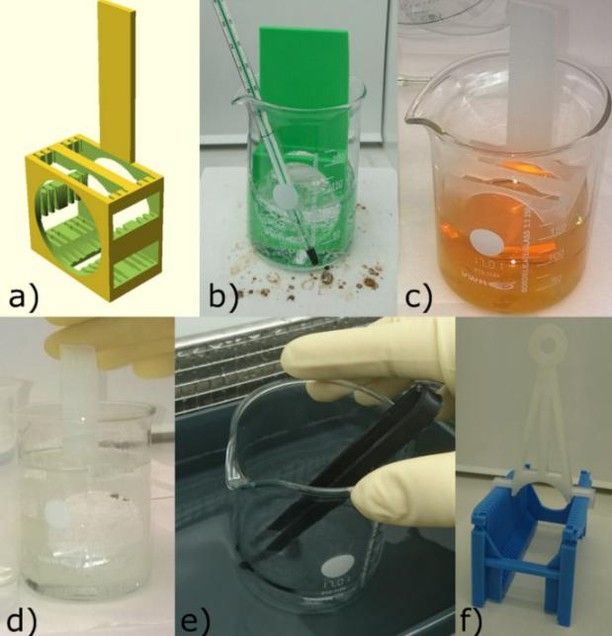 He then prints those models as hollow plastic moulds using an FFF printer, inserts blood-vessel replicas that will connect to a fake-blood pump, and injects the mould with a hydrogel that will solidify into an object with organ-like stiffness. The resulting structures are realistic enough for surgeons to practice their procedures with real-world consequences, including bleeding.
He then prints those models as hollow plastic moulds using an FFF printer, inserts blood-vessel replicas that will connect to a fake-blood pump, and injects the mould with a hydrogel that will solidify into an object with organ-like stiffness. The resulting structures are realistic enough for surgeons to practice their procedures with real-world consequences, including bleeding.
Ghazi says that he and his team use these models for up to four surgery cases a week. In each case, they create two copies of the models and pick the most accurate representation. And they’re training other doctors to apply the technology in fields such as heart and liver surgery. “This is definitely something that’s catching on a lot more,” Ghazi says.
But imperfections remain. The moulds produced by FFF printers often feature tiny ridges and pits, says Ghazi. Such defects are often too small to see with the naked eye, but are plainly visible to the robotic camera, which could affect the surgeon’s experience. Ghazi’s solution is to spread a layer of room-temperature wax over the inside of the mould, which fills in the ridges and pits, thus smoothing out the final product. “Those little things make a difference,” he says.
Ghazi’s solution is to spread a layer of room-temperature wax over the inside of the mould, which fills in the ridges and pits, thus smoothing out the final product. “Those little things make a difference,” he says.
Replica rocks
For Mehdi Ostadhassan, a petroleum engineer at the University of North Dakota in Grand Forks, 3D printing provides a tool for optimizing the extraction of oil and gas from rock.
Ostadhassan prints ‘rocks’ using programs such as OpenSCAD and the commercial 3D computer-aided design software AutoCAD (from Autodesk) in combination with various 3D printers and materials. These rock models have realistic physical properties, including tiny, detailed pores, and Ostadhassan puts them under physical stress to better understand how liquid flows through their real-life equivalents.
To create the most realistic rocks, Ostadhassan uses a range of printing approaches, including binder-jet technology, in which a liquid binding agent is applied layer by layer to gypsum powder or silica sand.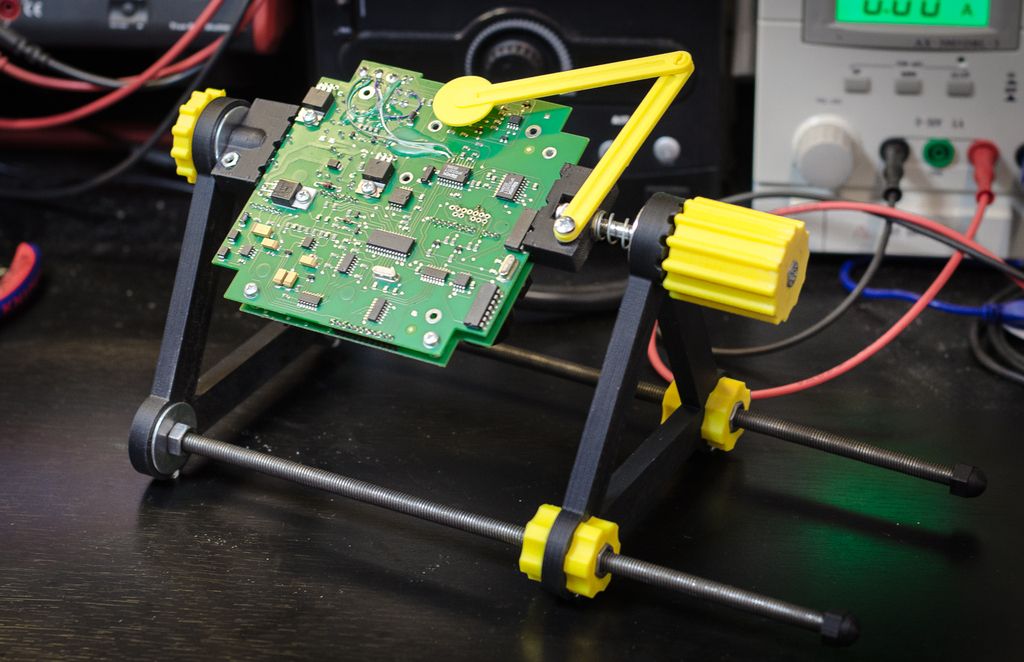 The process produces objects with mechanical properties that closely mimic those of real rocks. But unbound powder can also get stuck in the pores, Ostadhassan says, diminishing the quality of the final product. And for some experiments, he needs to apply a water-repelling treatment to get the ‘wettability’ right. Stereolithography printers are better at printing rocks with detailed pores to enable the study of liquid-flow properties, but the models they produce are not as strong as binder-jet-printed rocks.
The process produces objects with mechanical properties that closely mimic those of real rocks. But unbound powder can also get stuck in the pores, Ostadhassan says, diminishing the quality of the final product. And for some experiments, he needs to apply a water-repelling treatment to get the ‘wettability’ right. Stereolithography printers are better at printing rocks with detailed pores to enable the study of liquid-flow properties, but the models they produce are not as strong as binder-jet-printed rocks.
As such, Ostadhassan is collaborating with other researchers to develop a custom printer that can mimic those pores and cracks but still produce models with the same mechanical strength as real rocks.
Heavy metal
Today’s 3D printers can output a range of materials — but not all of them. “The material for 3D printing is very, very limited,” says Yang Yang, chief executive of UniMaker in Shenzhen, China, which makes 3D printers for scientific use. But research in the space is intense, and change is coming. One hot growth area is bioprinting, for use in creating structured biological materials. Jin-Ye Wang, a biomedical scientist at Shanghai Jiao Tong University in China, says that her institution has acquired one such device for use in the classroom. These bioprinters blend cells and hydrogels to create structures such as bones and tumour models.
One hot growth area is bioprinting, for use in creating structured biological materials. Jin-Ye Wang, a biomedical scientist at Shanghai Jiao Tong University in China, says that her institution has acquired one such device for use in the classroom. These bioprinters blend cells and hydrogels to create structures such as bones and tumour models.
Another growth area, Yang says, is metals. Metal-capable printers use a beam of electrons or a laser to melt metal powders in defined patterns. Jeremy Bourhill, a physicist at the University of Western Australia in Perth who researches dark matter, is studying the use of laser-based 3D metal printers to build a mesh of superconducting niobium. This could be used to block strong magnetic fields that would interfere with dark-matter detection, Bourhill says.
Using conventional machining to create the mesh would require toxic lubricants and waste a substantial amount of niobium, which is expensive. So Bourhill’s team is using high-powered lasers to melt and fuse cross-sections of metal powder together.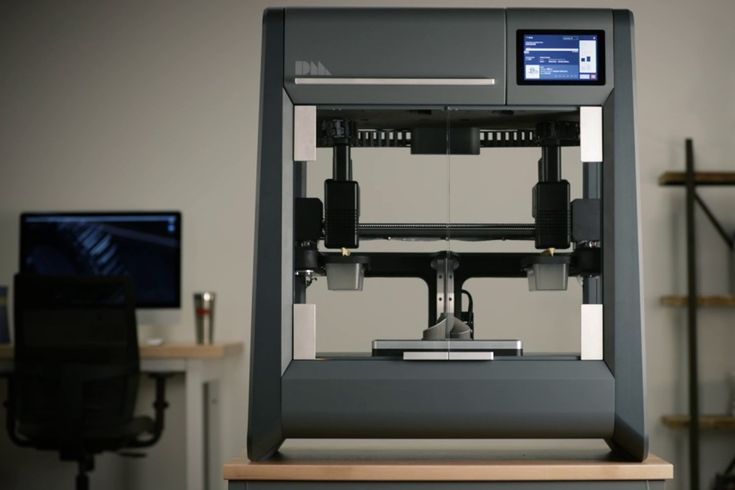 But because the melting point of niobium is about 2,500 °C, the process requires considerable amounts of power. “Niobium’s a really tough material,” Bourhill says.
But because the melting point of niobium is about 2,500 °C, the process requires considerable amounts of power. “Niobium’s a really tough material,” Bourhill says.
Once upon a time, researchers such as Bourhill would have been limited in their options. But with the increased availability of 3D printers, a fundamental shift has occurred, says Yusheng Shi, a materials engineer at the Huazhong University of Science and Technology in Wuhan, China: 3D printing is enabling personalized manufacturing, supplanting centralized manufacturing. As these examples show, researchers have just scratched the surface of what they can do with that power.
3D Printed Lab Equipment Labconscious®
*Click the images of the 3D printed items above to visit their source links.
Sustainable lab equipment that costs less
Researchers looking for ways to save costs in running their laboratories should consider 3D printing. This post idea came to me through the article 3D Printing Provides Cost Effective Alternative to Expensive Lab Equipment Plus R&D Tax Credit. Looking further I found this Open-source Scientific Tools collection on Thingiverse with a gel electrophoresis system, test tubes, a magnetic stirrer, micro pipettes, microscopes and even a Geiger counter! I quickly found other resources like the NIH 3D Print Exchange for custom labware, Open-Labware.net and Instrucables.com. It turns out that there are hundreds of open source lab equipment and supply 3D printer design files online. Improvements in 3D printer technology has made 3D printers cheaper to buy and easier to use - making them more accessible to scientists.
Looking further I found this Open-source Scientific Tools collection on Thingiverse with a gel electrophoresis system, test tubes, a magnetic stirrer, micro pipettes, microscopes and even a Geiger counter! I quickly found other resources like the NIH 3D Print Exchange for custom labware, Open-Labware.net and Instrucables.com. It turns out that there are hundreds of open source lab equipment and supply 3D printer design files online. Improvements in 3D printer technology has made 3D printers cheaper to buy and easier to use - making them more accessible to scientists.
Here are a few publications that exemplify how 3D printing can significantly reduce laboratory costs. New equipment can be produced and the life of used lab equipment is extended by repair or adding functionality. You'll appreciate some of the impressive customization!
DNA Assembly in 3D Printed Fluidics PLoS ONE
3D-Printing for Analytical Ultracentrifugation PLoS ONE
3D-printing your lab equipment—it’s cheaper than you think by Joshua M.
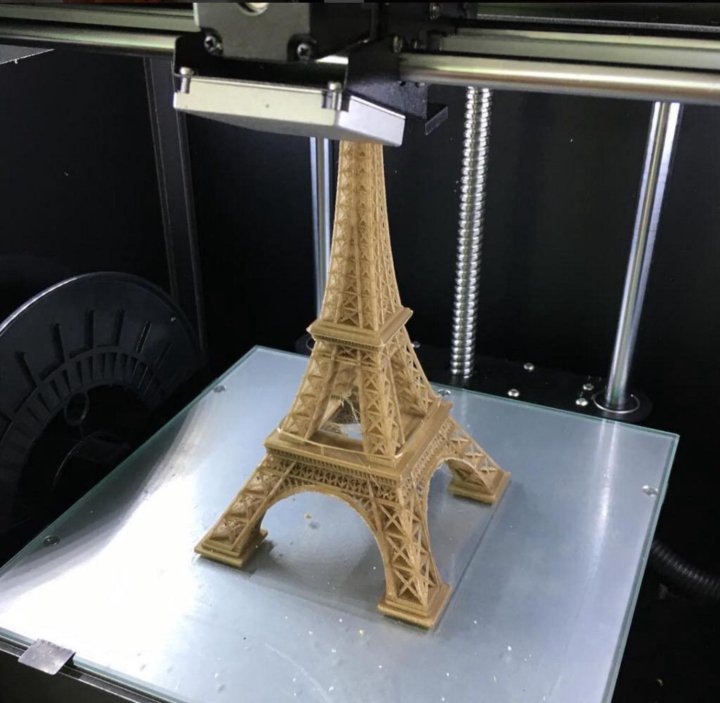 Pearce PhD Michigan Technology University
Pearce PhD Michigan Technology University
3D printing scientific lab equipment can be environmentally friendly
My next question was how can 3D printed lab supplies be more sustainable than ordering from a catalog? Most plastic lab supplies are produced by injection molding. This new paper Environmental and Economic Implications of Distributed Additive Manufacturing: The Case of Injection Mold Tooling (2017) Jrnl. Industrial Ecology reports how the alternative process of 3D printing yields a reduction potential of 3% to 5% in primary energy, 4% to 7% in GHG emissions, 12% to 60% in lead time, and 15% to 35% in cost over injection molding. 3D printer companies themselves help support sustainability efforts by accepting used cartridges, canisters, spools, print engines and containers for return, or recycle. All this green potential can go even further with some consideration to the plastic filament you use to print.
Eco-friendly filament for 3D printing
There was once no such thing as completely eco-friendly 3D printing with plastic. The common filaments that feed plastic into 3D printers are composed of either acrylonitrile butadiene styrene (ABS) or polylactic acid (PLA). PLA has always had the sustainable attribute of being a plant based bio-plastic. According to the article, Is Recycling PLA really better than composting? the environmental impact of recycling PLA is over 50 times better than composting, and 16 times better than incinerating PLA. Unfortunately PLA is not a sturdy enough material for most lab supplies. ABS on the other hand is a wonderfully sturdy material, but is not eco-friendly. To picture ABS picture a micro pipette or lego bricks. These items generally don't get processed by local recycling companies. There are recycling machines sold for use with 3D printers that can turn ABS or PLA objects back into filaments. Unfortunately, it can be tricky to ensure that the new filament is sufficiently pure for reuse in a 3D printer. These have been the challenges to eco-friendly 3D printing.
The common filaments that feed plastic into 3D printers are composed of either acrylonitrile butadiene styrene (ABS) or polylactic acid (PLA). PLA has always had the sustainable attribute of being a plant based bio-plastic. According to the article, Is Recycling PLA really better than composting? the environmental impact of recycling PLA is over 50 times better than composting, and 16 times better than incinerating PLA. Unfortunately PLA is not a sturdy enough material for most lab supplies. ABS on the other hand is a wonderfully sturdy material, but is not eco-friendly. To picture ABS picture a micro pipette or lego bricks. These items generally don't get processed by local recycling companies. There are recycling machines sold for use with 3D printers that can turn ABS or PLA objects back into filaments. Unfortunately, it can be tricky to ensure that the new filament is sufficiently pure for reuse in a 3D printer. These have been the challenges to eco-friendly 3D printing.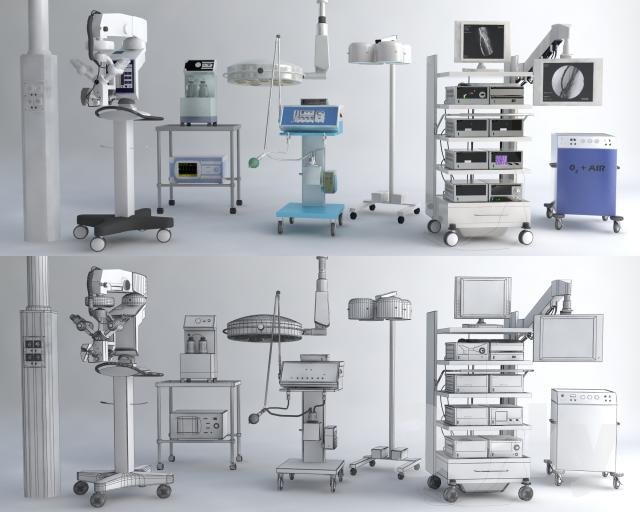
Fortunately there is a relatively new filament called "Enviro ABS" made by the company 3D Printlife. While regular ABS filament may require around 1000 years to disintegrate in a landfill, this filament will be gone in around 12 years. As per the company's comments on their ASTM D5511 testing, which is the “Standard Method for Determining Anaerobic Biode-gradation of Plastic Materials Under High-Solids Anaerobic-Digestion Conditions”. This predicted degradation time is dependent on the shape of the object. Certainly there would be a big difference between a small test tube and thicker parts to a microcentrifuge. The manufacturer uses an additive that allows it to be broken down by bacteria in a landfill to energy facility or a commercial compost. Eco-friendly 3D printing...Voila!
3D printers
Discounted goods
Delivery
In Moscow and Moscow region within 3 days. To other regions by courier service at the expense of the recipient.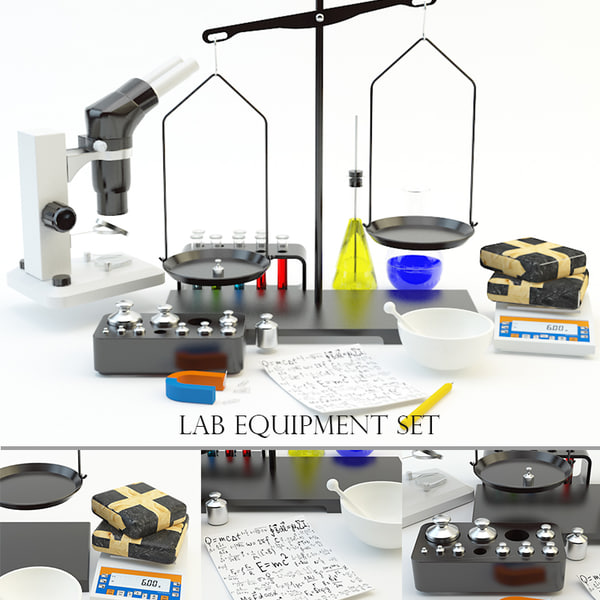
Payment
DEAR CLIENTS!
Due to the general economic situation and exchange rate instability , all prices on the website have the status "on request" .
We ask you to clarify the cost and availability of the ordered equipment from our managers by phone or on-line consultant. nine0013 Please note that price is valid for one day!
You can fix the price by making an advance payment for the selected product.
THANK YOU FOR YOUR UNDERSTANDING!
Cashless payment.
Cash in the office, st. Elektrodnaya, house 10.
selection by parameters
-
Creality
Creality HALOT SKY87900 c
-
Phrozen
Phrozen Sonic 4K 2022165000 c
-
Phrozen
Phrozen Sonic120000 c
50000 c
-
Carima
CARIMA DENTAL 3D PRINTER Specify the price with the manager -
Formlabs
FORMLABS FORM 3B450000 c
365000 c
-
Formlabs
Formlabs Form 3Check the price with the manager - nine0038 Formlabs Formlabs Form 2Check the price with the manager
-
Phrozen
Phrozen Sonic 4K 3D PrinterCheck the price with the manager -
Phrozen
Phrozen Sonic XL 4K Specify the price with the manager -
Renfert
SIMPLEX 3D Specify the price with the manager -
Creality
Curing chamber (UV chamber) and Sink Creality UW-0224590 c
21900 c
nine0037 -
Creality
Creality UW-01Check the price with the manager -
Formlabs
Form WashCheck the price with the manager -
Formlabs
Form CureCheck the price with the manager -
TRUMPF GmbH
TruPrint 1000Check the price with the manager
Carima
Illuminator CARIMA CL 300 PRO 219000 with
150000 c
LOADING
3D printing in chemistry - Ananikov Laboratory AnanikovLab.ru
The cheapest, simplest, and most common 3D printing method is Fused Deposition Modeling (FDM). In the vast majority of cases, this method uses the direction of the polymer: the polymer in the form of a thread with a diameter of about 2 mm, wound on a spool, is fed into a small extruder, where it melts and is extruded (pressed) through the nozzle already in the form of a thin thread, from which the layers of the future part are formed. . The nozzle opening diameter and layer thickness together determine the resolution of an FDM printer.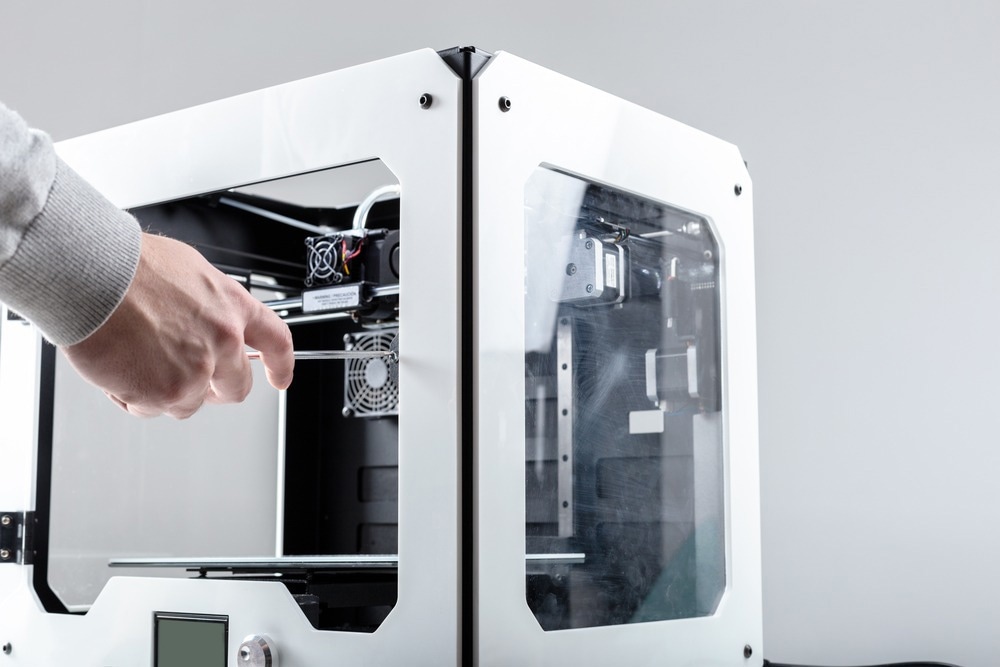 The design of such a 3D printer is relatively simple, so these devices are produced by many companies and their cost is low compared to 3D printers designed for printing by other additive methods. A significant advantage of FDM technology is the low cost of consumables, which are various polymers: acrylonitrile butadiene styrene (ABS), biodegradable polylactide (PLA), polyethylene terephthalate (PET), polypropylene (PP), nylon, polycarbonate, etc. nine0003
The design of such a 3D printer is relatively simple, so these devices are produced by many companies and their cost is low compared to 3D printers designed for printing by other additive methods. A significant advantage of FDM technology is the low cost of consumables, which are various polymers: acrylonitrile butadiene styrene (ABS), biodegradable polylactide (PLA), polyethylene terephthalate (PET), polypropylene (PP), nylon, polycarbonate, etc. nine0003
The process of 3D printing of chemical equipment elements from chemically resistant plastic using an FDM 3D printer.
The polymer filament deposition method has an average spatial resolution (usually 0.1 - 0.2 mm) and makes it possible to manufacture parts of various shapes and levels of complexity (Fig. 1). The enormous possibilities of 3D printing make it a very promising technology in education and science. Piece-by-piece production of unique laboratory equipment, visual aids (Fig. 2), mock-ups, models (including working mechanisms with moving parts) - all this is feasible even with the widely available FDM printing method. nine0003
nine0003
Fig. 1. Helical bonded channel made from two different resins in one 3D print run with two extruders running in sync. Finished products and a 3D model are shown.
Fig. 2. Ball-and-stick model of a molecule made by FDM printing from PLA plastic. To obtain a higher quality, the model was made in parts with subsequent assembly.
The high chemical resistance of some polymers (such as polypropylene, nylon, polyethylene terephthalate) in combination with the FDM printing method is well suited for the manufacture of small chemical laboratory equipment and chemical-technological laboratory installations. However, the real potential of 3D printing is not realized in the manufacture of standard laboratory equipment that can be bought, but in the creation of special products, such as chemical reactors, mixers and other elements of chemical installations, developed in-house for unique experiments. nine0003
The layering technology is mature enough to reproduce even the fine details of small chemical equipment. For example, Figure 3 shows a photograph of a mixer with three inlets and one outlet. The diameter of the internal channels of this mixer is only 2 mm. The conical notches on the inlet pipes are clearly visible, and the height of these notches is 0.5 mm. To increase the mixing efficiency, a miniature helical fin is made inside the central outlet channel. Of course, this is not yet the same thing as shoeing a flea, but everything is moving towards this. The manufacturing time of the mixer was 30 minutes. Try to make such a micro-mixer in half an hour using conventional methods! nine0003
For example, Figure 3 shows a photograph of a mixer with three inlets and one outlet. The diameter of the internal channels of this mixer is only 2 mm. The conical notches on the inlet pipes are clearly visible, and the height of these notches is 0.5 mm. To increase the mixing efficiency, a miniature helical fin is made inside the central outlet channel. Of course, this is not yet the same thing as shoeing a flea, but everything is moving towards this. The manufacturing time of the mixer was 30 minutes. Try to make such a micro-mixer in half an hour using conventional methods! nine0003
Fig. 3. Mixer-tee in the working chamber of a 3D printer, made of polyethylene terephthalate using the FDM method.
Fig. 4. Chemical microreactor with a complex labyrinth channel inside, made of PET by FDM printing. The individual parts of the reactor and the assembly are shown.
The ability to manufacture products with a complex internal structure, as already noted, is one of the main advantages of 3D printing.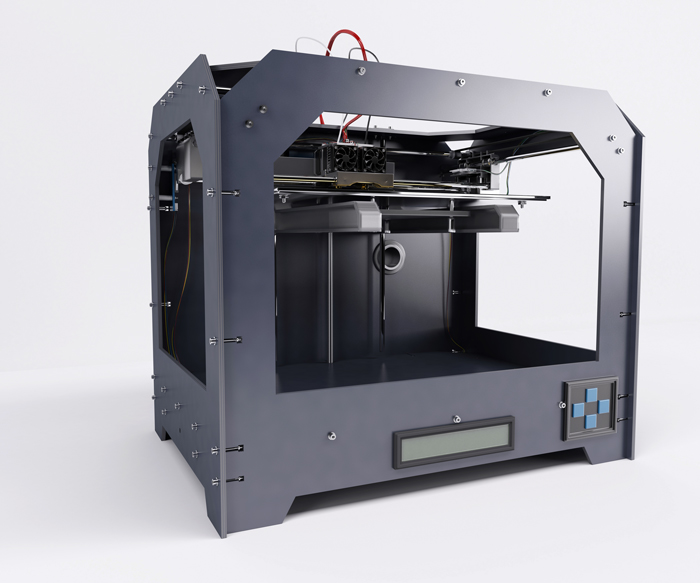 This possibility is well illustrated in Figure 4, which shows a complete chemical reactor the size of a matchbox. Like the "adult" chemical reactor, this "baby" has a shell, a lid connected by bolts to the shell, and a gasket to seal the working space. It is enough to look under the lid to see the complexity of the inner world of this worker of science: a labyrinth channel is organized inside the reactor, forcing the reaction mixture entering the shell through the side pipe to move along a complex trajectory, so that the reaction time is optimal to obtain the desired products. There are small baffles at the bottom of the labyrinth channel to keep the finely dispersed catalyst from being washed out quickly. The reaction products leave the reactor through the lower branch pipe. nine0003
This possibility is well illustrated in Figure 4, which shows a complete chemical reactor the size of a matchbox. Like the "adult" chemical reactor, this "baby" has a shell, a lid connected by bolts to the shell, and a gasket to seal the working space. It is enough to look under the lid to see the complexity of the inner world of this worker of science: a labyrinth channel is organized inside the reactor, forcing the reaction mixture entering the shell through the side pipe to move along a complex trajectory, so that the reaction time is optimal to obtain the desired products. There are small baffles at the bottom of the labyrinth channel to keep the finely dispersed catalyst from being washed out quickly. The reaction products leave the reactor through the lower branch pipe. nine0003
Microreactors can consist of any number of elements, each of which is individually manufactured using 3D printing (Fig. 5). Individual elements (Fig. 6) are eventually combined into workable chemical plants (Fig. 7).
7).
Fig. 5. Microreactor, consisting of a shell, a cover, a catalytic cartridge and a replaceable nozzle. The individual parts of the reactor, the reactor assembly and a three-dimensional model of the assembly are shown.
nine0003
Fig. 6. Mixer and zigzag microreactor made of PET.
Fig. 7. Laboratory chemical plant assembled from a microreactor and mixer, created by FDM printing methods.
3D printing can significantly speed up experimental chemical research, because it makes it possible to manufacture even complex multi-component chemical equipment right in the laboratory without significant material costs. This applies to both fundamental chemical research and chemical engineering projects. For chemical technology, 3D printing provides a truly unique opportunity to produce a series of reactors or other equipment with different design parameters in a short time to find the optimal solution. The cost of manufacturing even entire series of products using FDM printing is insignificant compared to the cost of commercial laboratory equipment.